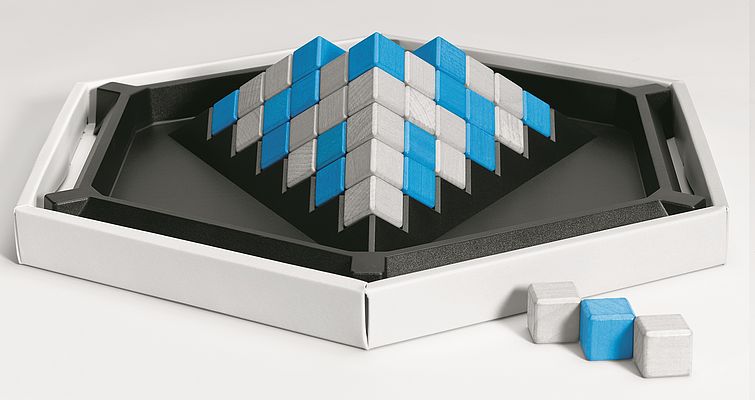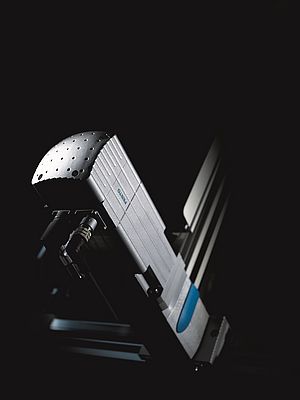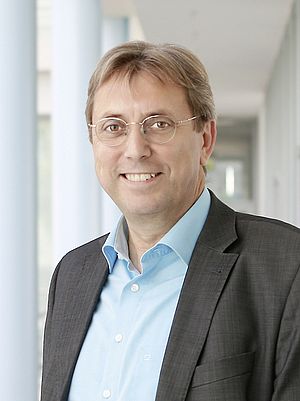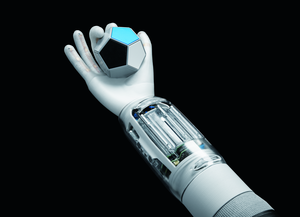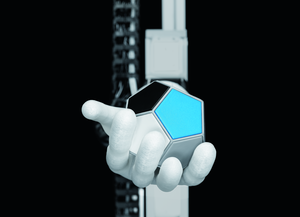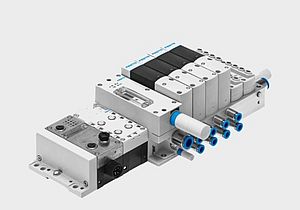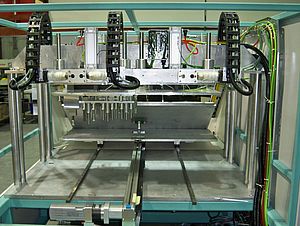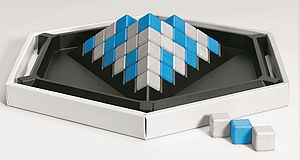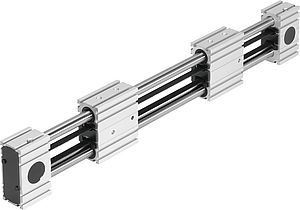30 years ago, Rubic’s Cube was the most popular puzzle game worldwide. In the spirit of this Magic Cube the Hungarian company Cubi Team Kft. developed the puzzle game ”CubiCup” – with an automation solution powered by electric drive technology.
The Magic Cube is a 3-D mechanical puzzle invented by the Hungarian sculptor and professor of architecture Ernö Rubik. 350 million Rubik’s Cubes were sold in the 1980’s. “CubiCup” a similar 2-player game, consists of forming a pyramid of wooden cubes in two different colours. The player setting the last cube on the peak is the winner.
Short cycle times
But before playing the game, the cubes must be manufactured on a machine that is highly and efficiently automated with electric actuators and controllers from Festo. The automation solution guarantees accuracy of the final products, short cycle times and short changeover times. With this automat the changeover from one toy to another is nothing more than the change of a program and the change of components, inserts and machining tools.
The CubiCup requires simple, but accurately sized wooden cubes. It might sound surprising, but for several reasons, this task is not simple at all: Firstly, traditional carpentry does not have a machining precision within a tenth of a millimetre, while this is a significant aesthetic matter for this toy. Secondly, there are no devices to grip and machine (chamfer the edges) such miniature components (cubes with a 17mm edge). Conversely, manual working is expensive and inefficient.
Precision and efficiency
Due to these problems, the company decided to construct a very flexible, multi-functional automat to machine small components with virtually no size limitation. The basic task is to produce accurate, chamfered edge cubes from a planed wood rod with a square cross section.
The automat is a three dimensional and a two dimensional machining device, a feeder-rotary unit, and an ejector unit incorporated into one machine. The feeder-rotary unit ensures cutting to the appropriate size, and a stepper motor from Festo ensures rotating to practically any angle. This allows the machining of materials with different cross-sections. The 3D movement is provided by the DGE spindle axis linear units driven by the EMMS-AS servo motor, which moves a milling motor as required by the machining task.
The milling motor executes the necessary shaping (e.g. chamfering when cubes are manufactured), but does not cut the work piece. The 2D unit cuts the work pieces already machined by the 3D unit. Finally, the ejector sorts and collects the finished components.
High performance
In the case of the 17 mm edged cube, the manufacturing target time is one second per piece. During that time the linear unit must move the milling motor four times above the work piece, and in the intermediate intervals the rotary unit must turn the wood rod by 90 degrees. The short cycle times correspond to 28,000 pieces of cubes/turn supposing an 8 hours turn. The toy in the box is made up of 56 cubes, thus considering the working time of one turn. The cubes required for 500 toys can be manufactured every day.


